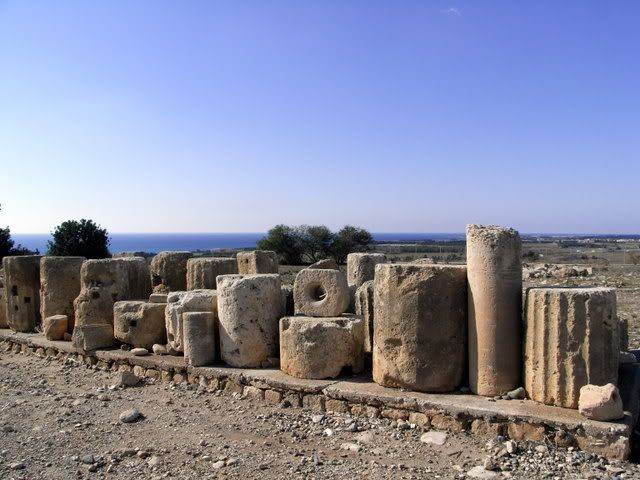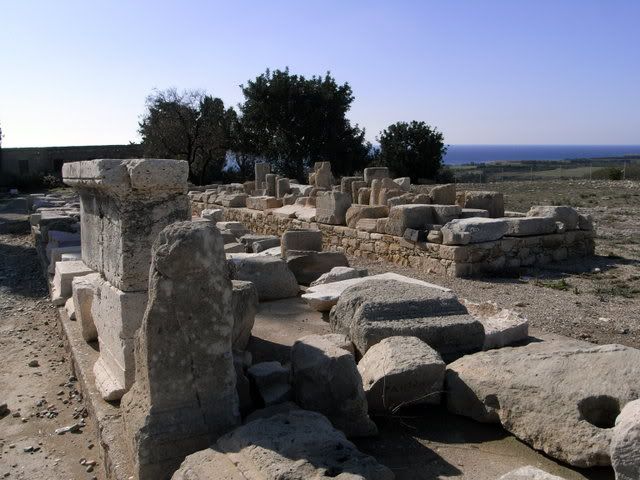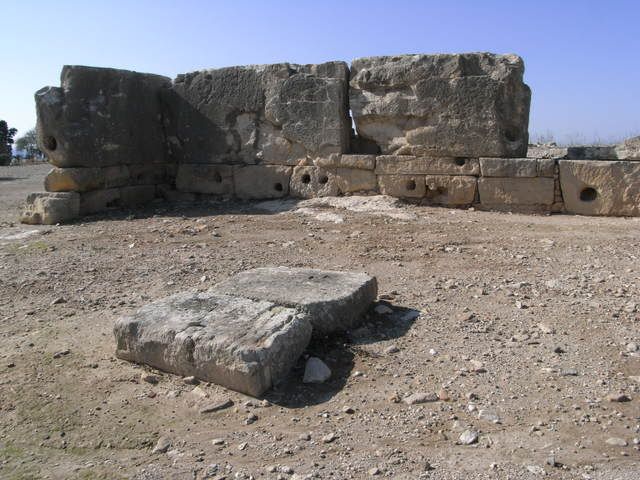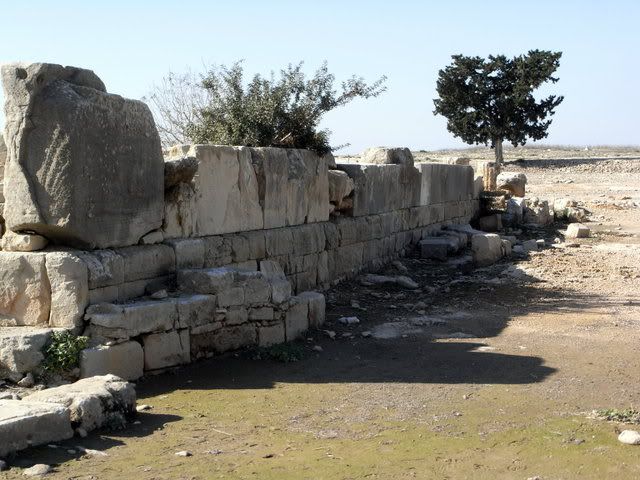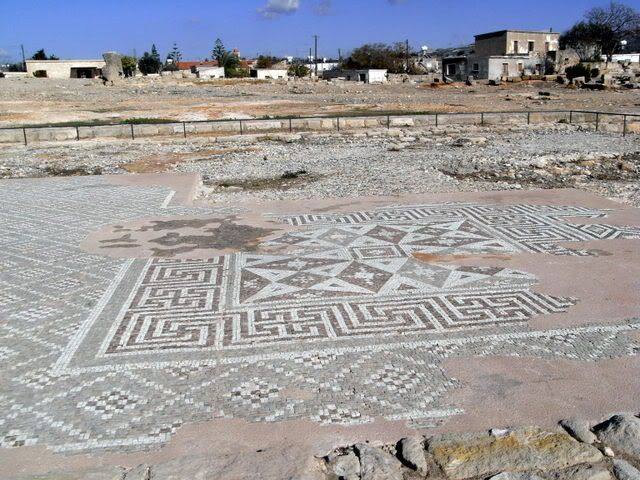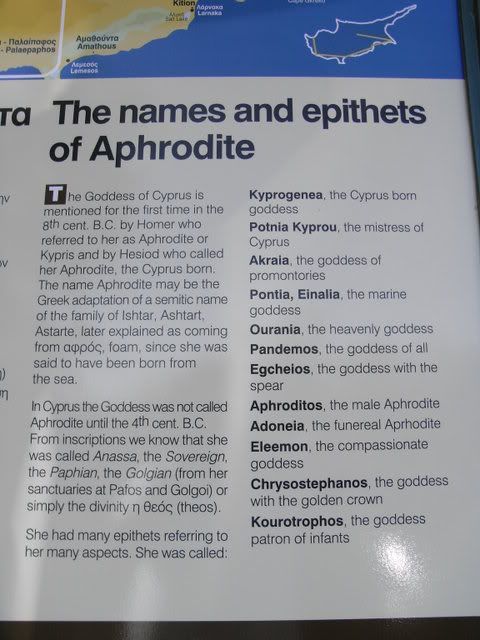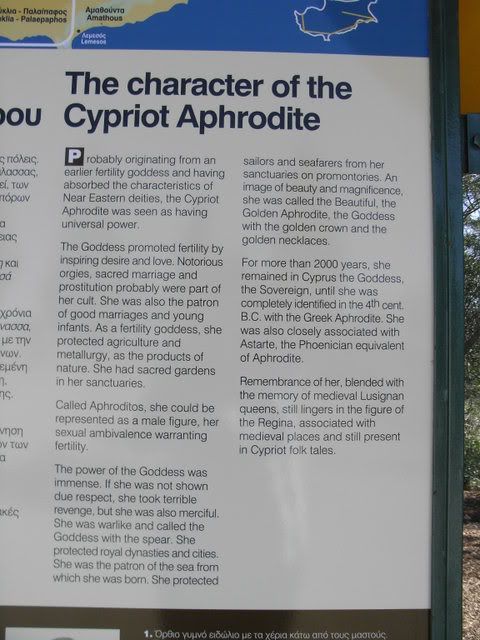Post by kedigato on Mar 2, 2009 19:19:54 GMT
The cult of Aphrodite was officially established on Cyprus in 1500 BC, with the building of a hilltop temple on this site.
However, idols of a fertility goddess dating from as early as 3800 BC have been found at Palea Paphos. The cult may owe its origins to Achaean colonists, who adopted the worship of a native fertility goddess named Astort (the Canaanite form of Ishtar), who they Hellenized as Aphrodite.
Although the worship of Aphrodite seems to have come from the east, it was soon identified with Cyprus. Homer referred to the goddess as the "Cyprian" as early as the 8th century BC, and she was called the "Paphian" in the 6th century BC. Inscriptions at Palea Paphos call her simply Wanassa, "the lady."
The Temple of Aphrodite stood on a knoll about 2km inland, overlooking the sea. The town of Palea Paphos soon sprang up around the temple.
According to ancient tradition, the hero Kinyras was the first king and consort of the goddess Aphrodite after she emerged from the sea at nearby Petra tou Romiou. The couple had a beautiful daughter named Myrrha, who was turned into a fragrent bush by her jealous mother. Then Adonis, born of its wood, became Aphrodite's lover.
This incestual myth was actually grounded in reality, as the Kinyrid dynasty both "wedded" the goddess Aphrodite through her temple prostitutes and married their own daughters upon the death of their wives. Royal descent was matrilineal. This arrangement was at least better than that of neighboring Asiatic love goddesses, who demanded the sacrifice of their consorts after ritual love-making.
Ritual prostitution seems to have been a significant part of the cult of Aphrodite at Palea Paphos. It was said that every young maiden went once in her lifetime to the sanctuary to make love with a stranger. The man chose his maiden, and threw some money at her feet (the sum was unimportant) and pronounced the formula, "I invoke the goddess upon you." Beautiful maidens were able to fulfill their duty quickly, while the ugly had to wait sometimes as long as four years to get it over with.
The memory of these rituals remained strong long after the destruction of the shrine. In the mid-14th century, the German priest Ludolf of Suchen described the ancient pagan pilgrimages in which
all ladies and damsels before their betrothal yielded themselves to men; for in Cyprus above all lands men are by nature most luxurious. For the soil of Cyprus... if a man sleep thereon, of its own self will all the night through provoke a man to lust.
During spring festivals for Aphrodite and Adonis, separate processions of garlanded men and women walked along the Sacred Way from Nea Paphos to the shrine of Aphrodite at Palea Paphos, where there were games and contests of music and poetry. This tradition survives (except for the prostitution) in the modern spring flower festival, Anthistiria, which is especially popular in Ktima Pafos.
The Sanctuary of Aphrodite continued to flourish in the Roman era. Several Roman emperors honored the shrine, and it was visited by Titus in 69 AD when the future emperor was on his way to Egypt. He consulted the oracle of Aphrodite, and was told that he had a great future. The sanctuary was rebuilt by the Romans after the earthquake of 76/77 AD, in a design that preserved the oriental layout of the original.
The cult of Aphrodite survived at Palea Paphos until the 4th century AD, when Emperor Theodosius outlawed paganism. It is not known when the cult of Aphrodite was suppressed or if the local population resisted the edict.
The site fell into ruin. Shortly before Theodosius' law, a wealthy Roman built a private villa adjacent to the Archaic shrine (bits of the mosaic floor of the Roman villa are still visible), doing some damage. From Byzantine times onwards, local villagers used the ruins as a quarry for building materials. Virtually every old building in Kouklia incorporates a stone or two from one of the most important shrines in the ancient world. Finally, in the Middle Ages, sugar-milling machinery was built atop the stone foundations, destroying anything remaining above knee level.
The sanctuary of Aphrodite was first excavated in 1887 by the Cyprus Exploration Fund, with some of the finds going to the British Museum. It was explored by the British Kouklia Expedition in 1950-55 and has been dug by a Swiss-German expedition since 1996. Excavations continue on the site of the sanctuary, the city and the necropolis of Palea Paphos.
from Sacred-Destinations
* * * * * * * * * *
